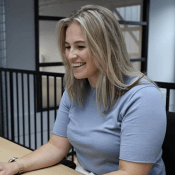Sense of scale: when choosing IIoT, look beyond short-term needs
Don’t hold your business back with a sensor product that won’t scale.
Earlier this month, an article in the Economist declared data the world’s most valuable resource, surpassing oil. The statement isn’t particularly novel, but it remains relevant. Heads around the 30MHz office nodded in agreement— after all, we’re building a business around this very notion. Data is a commodity, access to which is not defined by geology or market dominance, but rather by access to technology. And it’s not just for the largest players. For organizations of various sizes, there’s data right in the backyard, all it takes is the right tools to tap into, refine and monetize it.
Sensor technology enables businesses to quantify and monitor their assets, processes, and environments, using their own physical space as the data source. From industry and logistics to smart city, agriculture and experience, the practical applications of sensory data are limitless. Whatever you want to measure— there’s a sensor for it, or a combination of sensors to do the trick. But continuing with the ever-present oil comparison:
“So how do you mine/drill? Today’s pickaxes are the sensors, at the data frontier, sucking up information ready to be used. How about the refining? Cloud analytics, shipping the vast quantities of data from the sensors to the user while crunching it into a usable format. How do you use it? Custom dashboards that generate real-time insight enabling the right people to make better decisions. For all this we need a lot of smart sensors, a secure cloud environment, analytics and dashboard capability… and ideally all in one package.”
Smart sensing is a methodology. Capturing sensory data can have multiple aims and solve multiple problems within an organization. Pilots and projects have parameters, but if you’re working with the right product, the limits of smart sensing don’t come predefined. Let’s take the example of an office building. A project aimed at reducing search time for meeting rooms might start with monitoring room occupancy, then expand to include desk occupancy— having morphed in the process into an initiative to reduce overhead and reduce unnecessary expenditures on desktop computers. Later, CO2 measurements might be added to reduce fatigue and improve concentration— or vehicle sensors to help streamline employees’ parking search. With the right dashboard, metrics from each of these sensors are centrally visible. The organization can now observe relationships between variables, adding nuance to their conclusions.
A scalable, interoperable sensor product can evolve with an organization’s needs. But it’s crucial that businesses not limit themselves preemptively with their choice of product.
Make sure you own the oil in your backyard
Regardless of an organization’s size, data is valuable. In agriculture, sensory data can help farmers uncover new methods for loss reduction, improving crop quality. In facilities management, it can provide key insights to lower overhead and guide investment in space utilization. In industry, it can optimize asset utilization and help anticipate maintenance needs. In commercial insurance, it can guide proactive risk management strategies across sectors. These actionable insights drive ROI. If the sensor product is scalable and plug & play, capital expenditure is limited— sensors can be added incrementally, and projects don’t include consulting fees or IT costs. A subscription-based, pay-per-use product keeps sensing costs in check.
Data’s value goes beyond its applications. Emphasizing the importance of treating data as a business asset, Gartner’s Douglas Laney points out that “business leaders are often tripped-up by the common misconception that information only has value when applied — i.e., data has no value when sitting idly in a database. This simply is not so. Just as physical inventory sitting on a shelf in a warehouse has discernible value, so do idle information assets. The difference is between realized value and the accounting definition of an asset’s value—which takes into consideration its probable future economic benefit.”
That economic benefit maps directly back to increased shareholder value.
With so much untapped potential in quantifying their environments, organizations would do well to safeguard their most precious asset, working with a product that guarantees them sole proprietorship of their data.
Is the product actually usable?
It seems self-evident, but sensor technology has to be usable. Not just by the data scientist or the IT team. Across the organization. If smart sensing is going to actually improve productivity, sensory data has to be shareable, and accessible through an intuitive interface. How quick is the product to deploy? Will an extensive team be needed for setup? How long will it take to add new sensors? Will end-users need months of training to make sense of what they’re looking at?

Will the network handle scale?
Depending on project scope or company size, an organization’s first foray into smart sensing may not pose significant connectivity challenges. Then again, offshore or industrial conditions might. Regardless of a project’s initial size, a sensor product should be ready to support scale at any pace.
The value of a smart sensing product lies in real-time data, and the ability to make faster, more informed decisions. Scale and consistent uptime are non-negotiable, and a sensor product should be designed to anticipate the demands of IIoT for years to come. The 30MHz architecture is designed for reliability and scale, with every customer’s mesh network operating without interference.

In a mesh network, each component is redundant and designed to be replaced individually— making the network resilient to disruption. We’ve made sure all nodes are equal, so no technical difficulty can bring down the network. A local sensor problem can be solved while the rest of the network continues transmitting data unaffected. With 30MHz, each customer’s sensor network becomes stronger as it grows. The sensors act as routers, so the more sensors are added to the network, the stronger the signal between them. Rather than straining to scale, organizations strengthen their network and cover longer distances with every sensor added.
Can it scale in variety?
Beyond the number of sensors, organizations should consider the diversity of metrics they may want to capture down the line. To be truly scalable, a sensor product should enable organizations to add new sensor types (including third-party sensors) and other wireless devices, without sacrificing a centralized overview. 30MHz enables customers to capture any metric— no matter how niche— with the 30MHZ Connect, a device that easily makes third-party sensors wireless and interoperable with the ZENSIE dashboard.The 30MHz API ensures that insights from the physical world can be visualized seamlessly with data from other sources, all in one place.
Sensor technology is neither mythical nor unattainable, and it’s certainly not reserved exclusively for enterprise budgets. We’ve seen organizations of all sizes improve efficiency and drive profitability with data from their physical environments. Whatever their size and current needs, businesses deserve accessible, usable IoT that can deploy today and scale to support evolving needs for years to come.


30MHz is typing… Our extended support team is ready to chat!
At 30MHz we think it’s important that our users can use our platform in an optimal way. At times you may have questions and you would like some help from our support team. Email and our support page filled with helpful articles were your go to’s. But we thought it was time for something extra… ...Read more
New 30MHz connect casing: How we protect your tech
To make sure your dataflow is fully protected, 30MHz introduces a new connect casing: waterproof, dust proof and even resistant to hits. This special shield will last longer and ensure a reliable dataflow from the connected sensor. What does that full protection mean? That’s what we will explain in this article. Watertight: resistant to wetness ...Read more
Most popular sensors for your greenhouse
As a grower, you know that optimal crop development starts with precise monitoring of your cultivation environment. But how do you transform raw data into actionable insights for your crops? This is where our wireless sensors and the 30MHz platform come together. Our sensors measure essential variables such as VPD, dew point, moisture deficit, EC, ...Read more


